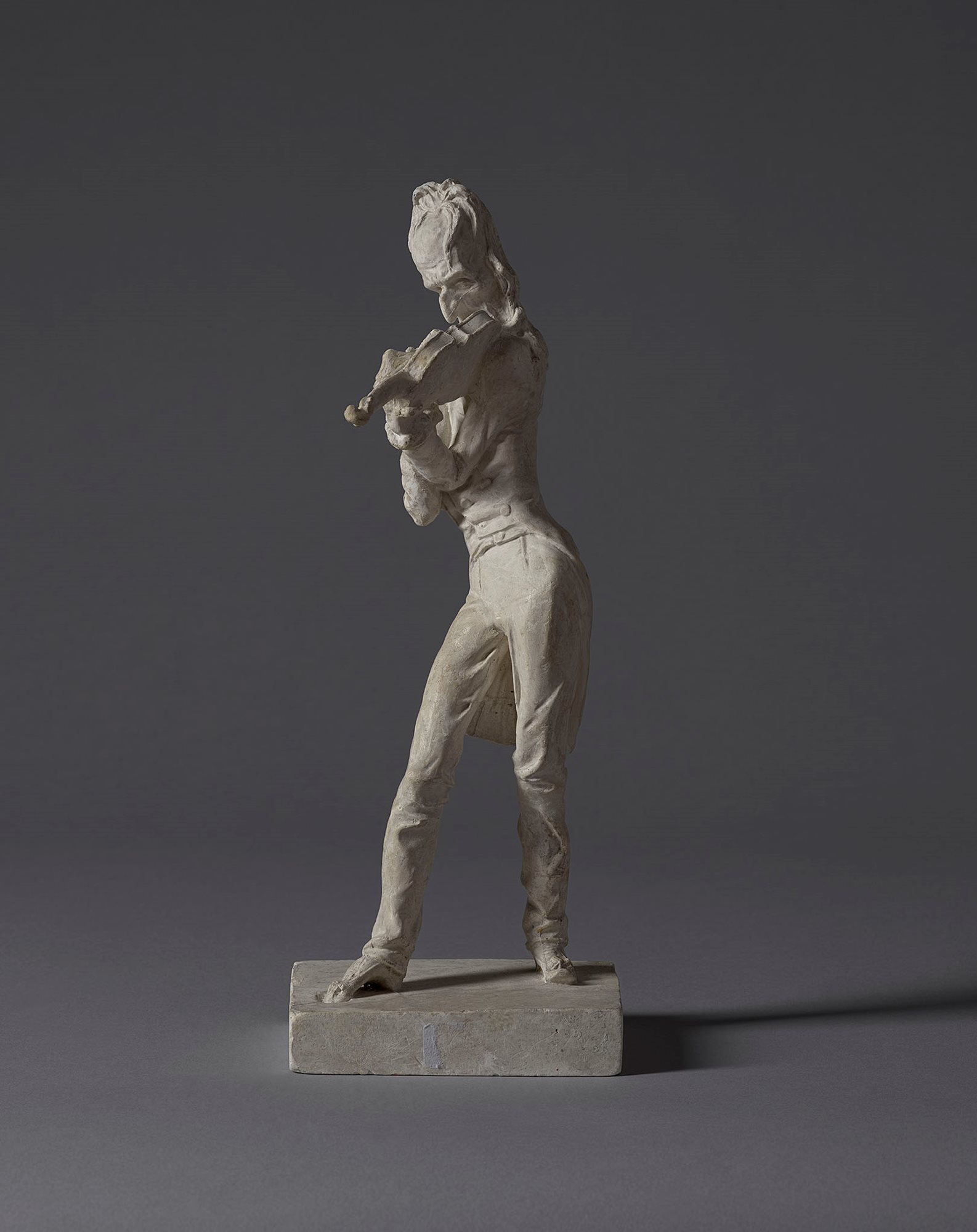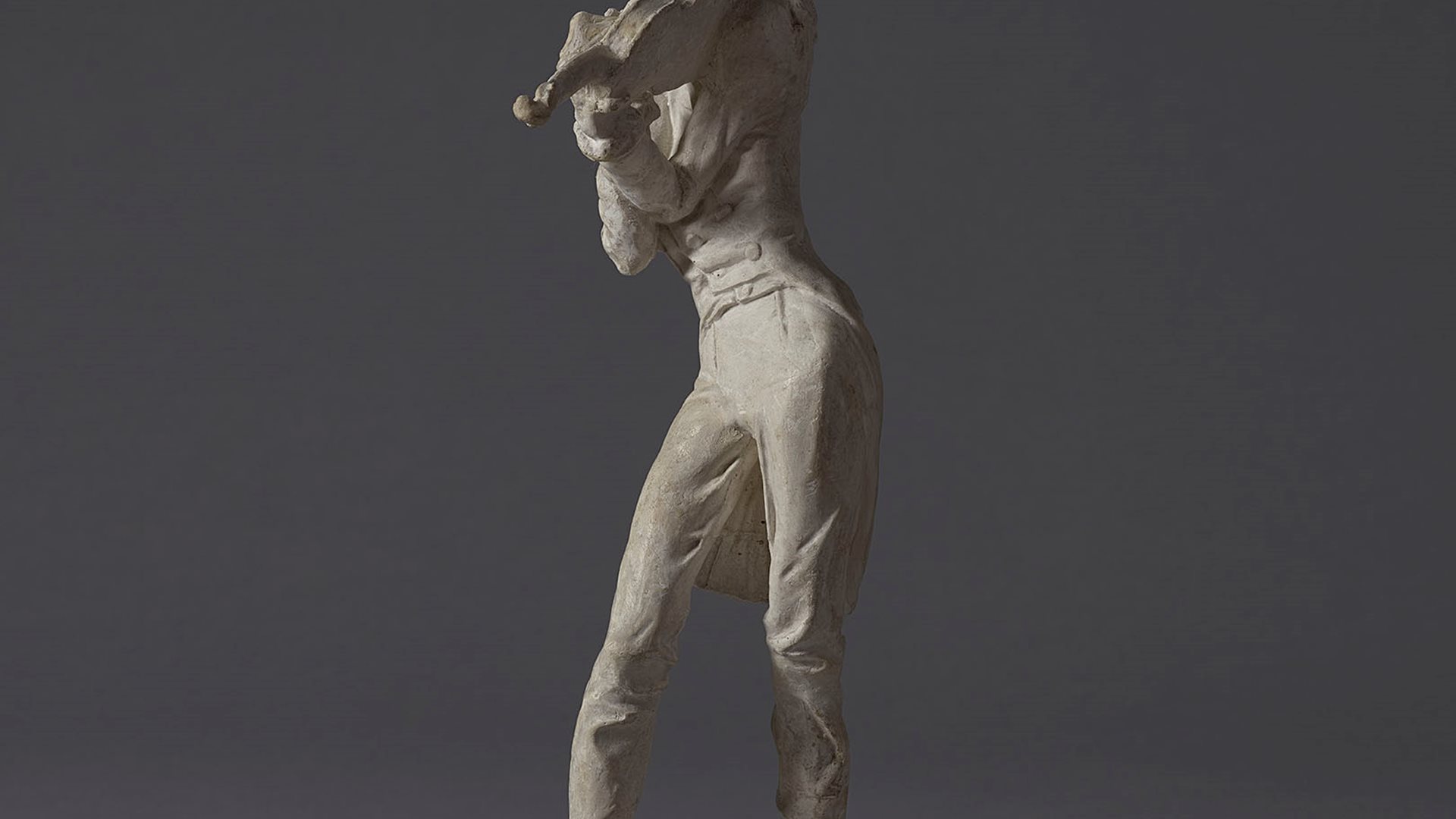

Private collection, France
J. Seligman, Figures of Fun: The Caricature- Statuettes of Jean-Pierre Dantan, London, 1957
Ph. Sorel, ‘Les Dantan du Musée Carnavalet, Portrait-charges sculptés de l’époque romantique’ in Gazette des Beaux-Arts, January 1986, part I, pp. 1-38, February 1986, part II, pp. 87-102
Dantan jeune : caricatures et portraits de la société romantique, exhib. cat. ed. by Ph. Sorel, Musée Carnavalet, Paris, 1989, no. 53.
Ph. Sorel, ‘Les Dantan du Musée Carnavalet, Portrait-charges sculptés de l’époque romantique’ in Gazette des Beaux-Arts, January 1986, part I, pp. 1-38, February 1986, part II, pp. 87-102
Dantan jeune : caricatures et portraits de la société romantique, exhib. cat. ed. by Ph. Sorel, Musée Carnavalet, Paris, 1989, no. 53.
Described by Janet Seligman as “perhaps the caricaturist’s most successful single work”, this statuette shows the famed musician Niccolò Paganini. Thanks to the brilliance of Dantan’s execution but also because of the aura of legend that surrounds the name of Paganini, the present sculpture, which resembles a twisted vine, has a strength and energy quite out of proportion to its small size.
Paganini’s first visit to Paris took place in 1831. When he arrived in France, after being acclaimed in Italy and Germany, the virtuoso became the craze of the capital. His strange appearance along with his marvellous playing much intrigued his contemporaries who heard many stories about the mysterious violin player[1]. His unusual physique – his arms and fingers were double-jointed – seemed to explain his technical prowess.
Born in a family of sculptors, Jean-Pierre Dantan started his apprenticeship with his father, an ornamental wood-carver, and entered the Ecole des Beaux-Arts in Paris in 1823. After spending two years in Rome, Dantan returned to France in 1831 where he set about producing his statuettes caricaturing men and women prominent in the world of art, theatre, music and letters. He found his inspiration in artistic circles and always refused to show any political engagement. Considered in his day to be the originator of caricature portraits, Dantan paved the way for Honoré Daumier’s (1808-1879) series of satirical busts of members of the Parlement and the vigour of his statuette of Paganini announces Daumier’s Ratapoil (ca. 1851). In accordance with the artist’s wishes, his widow donated a large collection of his works to the Musée Carnavalet in Paris in 1888, where a bronze cast of the present statuette can be seen, along with a statuette in patinated plaster and two ‘serious’ busts of Paganini.
Paganini’s first visit to Paris took place in 1831. When he arrived in France, after being acclaimed in Italy and Germany, the virtuoso became the craze of the capital. His strange appearance along with his marvellous playing much intrigued his contemporaries who heard many stories about the mysterious violin player[1]. His unusual physique – his arms and fingers were double-jointed – seemed to explain his technical prowess.
Born in a family of sculptors, Jean-Pierre Dantan started his apprenticeship with his father, an ornamental wood-carver, and entered the Ecole des Beaux-Arts in Paris in 1823. After spending two years in Rome, Dantan returned to France in 1831 where he set about producing his statuettes caricaturing men and women prominent in the world of art, theatre, music and letters. He found his inspiration in artistic circles and always refused to show any political engagement. Considered in his day to be the originator of caricature portraits, Dantan paved the way for Honoré Daumier’s (1808-1879) series of satirical busts of members of the Parlement and the vigour of his statuette of Paganini announces Daumier’s Ratapoil (ca. 1851). In accordance with the artist’s wishes, his widow donated a large collection of his works to the Musée Carnavalet in Paris in 1888, where a bronze cast of the present statuette can be seen, along with a statuette in patinated plaster and two ‘serious’ busts of Paganini.